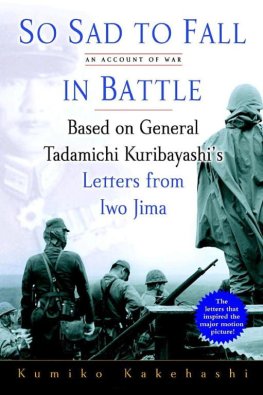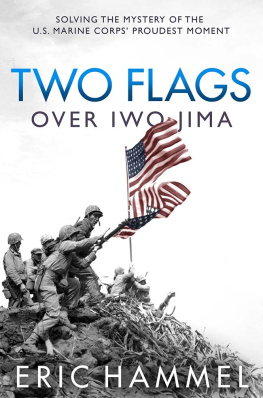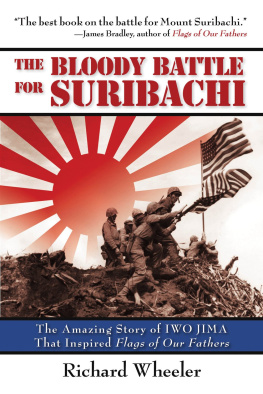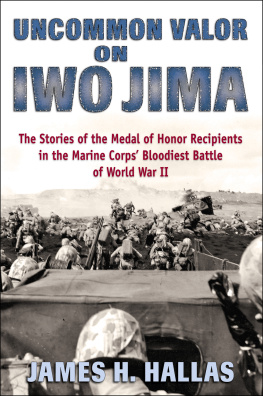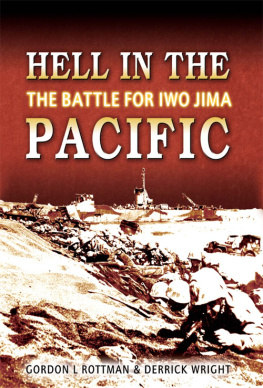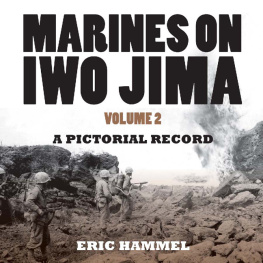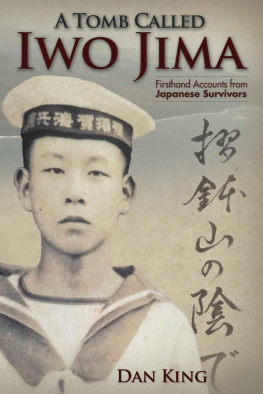UNCOMMON VALOR, COMMON VIRTUE
IWO JIMA AND THE PHOTOGRAPH THAT CAPTURED AMERICA
HAL BUELL

A BERKLEY CALIBER BOOK
NEW YORK
THE BERKLEY PUBLISHING GROUP
Published by the Penguin Group
Penguin Group (USA) Inc.
375 Hudson Street, New York, New York 10014, USA
Penguin Group (Canada), 90 Elington Avenue East, Suite 700, Toronto, Ontario M4P 2Y3, Canada (a
division of Pearson Penguin Canada Inc.)
Penguin Books Ltd., 80 Strand, London WC2R) RL, England
Penguin Group Ireland, 25 St. Stephens Green, Dublin 2, Ireland (a division of
Penguin Books Ltd)
Penguin Group (Australia), 250 Camberwell Road, Camberwell, Victoria 3124, Australia (a division of
Pearson Australia Group Pty. Ltd.)
Penguin Books India Pvt. Ltd., 11 Community Centre, Panchsheel Park, New Delhi110 017, India
Penguin Group (NZ), cnr. Airborne and Rosedale Roads, Albany, Auckland 1310, New Zealand (a division
of Pearson New Zealand Ltd.)
Penguin Books (South Africa) (Pty.) Ltd., 24 Sturdee Avenue, Rosebank, Johannesburg 2196, South Africa
Penguin Books Ltd., Registered Offices: 80 Strand, London WC2R 0RL, England
Copyright 2006 by Hal Buell and Lou Reda
All rights reserved. No part of this book may be reproduced, scanned, or distributed in any printed or electronic form without permission. Please do not participate in or encourage piracy of copyrighted materials in violation of the authors rights. Purchase only authorized editions.
ISBN: 978-1-1012-0582-2
Berkley Caliber is a registered trademark of Penguin Group (USA) Inc.
The C design is a trademark belonging to the Penguin Group (USA) Inc.
This book has been cataloged by the Library of Congress.
F OR
Joe Rosenthal
A G REAT A MERICAN
The title of this book is taken from the final report by Admiral Chester Nimitz
on the Iwo Jima campaign. He wrote, in part:
For those who fought on Iwo Jima,
Uncommon Valor was a Common Virtue.
ACKNOWLEDGMENTS
F EW BOOKS ARE the work of a single person. Many have helped with this volume:
Claudia DiMartino, invaluable first editor, helped keep the story in line. Jorge Jaramillo of AP Wide World Photos found many pictures in AP files. Richard Horwitz found still more in the National Archives and helped keep the digital files organized. Chuck Zoeller, director of the AP Photo Library, likewise contributed research, time, and effort. Norman Hatch, who headed up photo operations on Iwo, contributed valuable detail. Daniel Schwartz researched newspaper files to find daily reports from 1945.
Lou Reda of Lou Reda Productions, Inc., Easton, PA, stayed with the book over many years, certain it would find a place and contributed the enclosed DVD. Frank Weiman of Literary Group International likewise helped put the book in the proper pipeline.
Naval Institute Press permitted liberal use of Marine quotes from their book, Never In Doubt: Remembering Iwo Jima , edited by Lynn Kessler.
Natalee Rosenstein of Berkley Publishing Group guided the story to the printed page.
Thank you, each and every one.
AUTHORS NOTE
M Y INTEREST IN the Iwo Jima flag-raising photograph taken by Joe Rosenthal has a long history.
I was a recent elementary school graduate focused on my coming high school adventure when the photo was first published in February of 1945. I have no memory of its appearance at that time. In college, my interest drifted toward photojournalism, and that brought the picture to my attention. Its power and influence underscored the power of photography, a consideration that became one of several to turn my head more directly toward picture journalism as a career.
Transferred by Associated Press (AP) from Chicago to New York in 1957, I worked on the photo desk with Jack Bodkin, who, as an editor with the Wartime Still Picture Pool in Guam, was the first to see Rosenthals picture as it was taken out of the developing tanks at pool headquarters. George Sweers, AP photographer who covered the Korean War, and who was my predecessor as APs Asia photo editor, worked as a wirephoto operator in Kansas City the Saturday that the picture was transmitted on the AP network.
In 1960, as AP photo editor in Asia, I visited Iwo Jima, then under U.S. jurisdiction. I walked the black sands of the invasion beach, saw the rusting hulks of military equipment along the shore and inland, visited Japanese fortifications, and traveled a paved road up Mt. Suribachi to the spot Rosenthal chose to take his picture a generation earlier. Keyes Beech, then a much-respected Asia correspondent for the Chicago Daily News , a paper I had grown up with and admired, was on the same junket. Beech was a Marine Corps journalist and covered the Iwo battle. He was one of five Marine journalists who contributed to The U.S. Marines on Iwo Jima , one of the first accounts of the battle from beginning to end. Over drinks in Tokyo, our mutual home base, I asked about the flag picture and its impact, and was rewarded with many insightful tales. Beech also accompanied the flag raisers on their War Bond tour. I also developed a friendship with Bob Trumbull, New York Times correspondent who covered Iwo, and who by 1960 worked in an office adjacent to AP in Japans major national newspaper, Asahi Shimbun .
Reassigned to New York and named head of AP photos, I met Richard Newcomb, who wrote Iwo Jima , another must read book for anyone interested in the battle. I attended Joe Rosenthals party when he retired from the San Francisco Chronicle . We met frequently thereafter at one or another photo or AP function, including one marathon lunch in the Italian section of San Francisco that lasted from noon to 5:00 P.M. Gradually, bit by bit, the Iwo storyflag picture and the battleemerged in all its texture. I was captivated and dug deeper into AP files and into picture archives. I searched eBay for Iwo memorabilia. I explored the Iwo story from the Japanese perspective. Norman Hatch, Marine Corps photo officer on Iwo, filled in empty spaces about military coverage of the conflict.
It seemed that too much of what I read contained some error of fact, many of which are corrected in this volume. I was struck over and over again at how this picture had become such a significant thread in the American experience, including its connection to the terrorist attack on the World Trade Center. I was struck by the attempts to trivialize the picture, the many attacks upon its credibility and the misinformation about the picture that survived even to contemporary times.
Much of what was written concentrated either on the battle or on the picture. Somehow that missed the point; you cannot separate wet from the water.
This book is the result of this lifelong interest. Unlike other books on the subject, this book contains many photographs reproduced in large size. Some of the pictures are old standbys; some have been seen only rarely, others not at all. Some are Rosenthals photos, some were made by military combat photographers, others are news pictures of the continuing, six-decade-long saga of that ferocious battle and the picture that memorializes it.
CONTENTS
UNCOMMON VALOR, COMMON VIRTUE
HISTORY OF IWO JIMA
T HREE GROUPS OF islands string out to the south from Tokyo for some 750 miles, reaching to within 300 miles of the Marianas. Japanese history refers to these islands as Nanpo Shoto ( shoto means island group). They are, from north to south:


